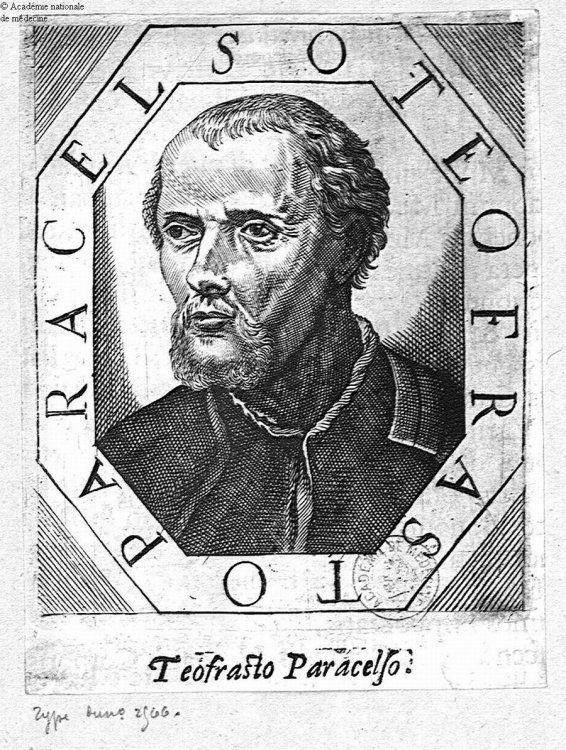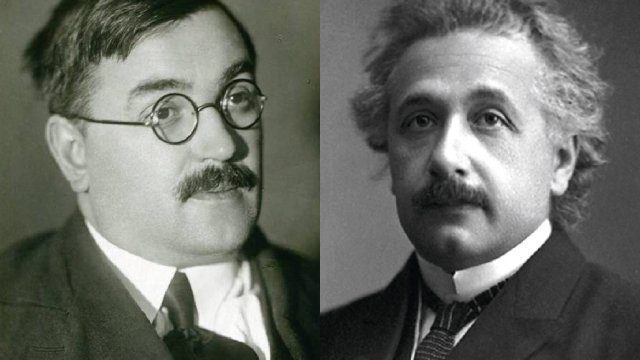Official:
Paracelsus (real name Philippus Aureolus Theophrastus Bombastus von Hohenheim). September 21, 1493 – September 24, 1541. Famous alchemist and physician of Swiss-German descent, one of the founders of iatrochemistry.
Life and Work:
1. A famed physician, naturalist and alchemist Philippus Aureolus Bombastus von Hohenheim was not too obedient and modest. He traveled all over the world, fought with authorities, treated people and conducted experiments, wrote books and taught in German instead of Latin, commonly used at that time, which was also a challenge.
2. Paracelsus was born into a physician's family from an ancient but impoverished noble stem. His mother was no stranger to medicine herself – she treated nuns in an abbey.
3. Nature deprived Philippus of beauty – a frail body, skinny crooked legs, big head, but compensated the shortfall by outstanding academic abilities.
4. Future Paracelsus received brilliant home education in the spheres of medicine and philosophy. By the age of 16 he had studied the fundamentals of chemistry, therapy and alchemy.
5. Having taken what he could from the family, Philippus left his ancestral home forever and went to study at the University of Basel. He obtained his degree of Doctor of Medicine in Ferrara and was taught occult sciences by famous Johannes Trithemius in Wuerzburg.
6. His voyage did not end there. It was only the beginning: during his less than 50-year life, Paracelsus traveled all around Europe. As a medic, he took part in multiple military campaigns, visited nearly all European universities, saw England, Scotland, Spain, Portugal, France, Scandinavian countries, passed by Poland, Lithuania, Prussia, Hungary, Transylvania, Walachia and states of the Apennine peninsula. There were rumors that he visited North Africa, Palestine, Constantinople, Russia and even was in Tatar captivity.
7. Paracelsus did not travel just for the sake of traveling, but collected scientific information. He took it not only from physicians and alchemists, but from very different people: executioners, barbers, shepherds, gypsies, midwives and so on.
8. Philippus von Hohenheim believed that his knowledge and skills surpassed those of ancient Roman physician Celsus, and did not keep this opinion to himself, but pronounced himself Paracelsus – the one surpassing Celsus.
9. Paracelsus was generally not too modest or close-mouthed: once he stated that his shoes knew more about medicine than reputable physicians of the past. As a way to show his disdain for ancient physicians and existing treatment methods, he set fire to works of Aristotle, Galen and Avicenna right in front of the University of Basel.
10. In 1530, Paracelsus visited Nuremberg. Local physicians called him a cheater, and to prove them wrong, he cured several patients with elephantiasis.
11. A doctor of both medicines, therapy and chemistry, he thought a lot about the origin and course of diseases. It was Paracelsus who curbed the outbreak of plague by using something similar to vaccination for the first time.
12. That time, miners were often struck by silicosis. Paracelsus managed to explain its nature and causes.
13. It was Paracelsus who was the first to use chemical products for treatment – Alexander Herzen even called Paracelsus the first chemistry professor since the creation of the world.
14. Paracelsus is believed to be the grandfather of modern pharmacology. “All things are poison and nothing is without poison; only the dose makes a thing not a poison,” Paracelsus formulated. Translated into modern language, it means that the dose is what makes a poison a medicine.
15. According to Paracelsus' Doctrine of Signatures, the form, color and taste of a plant indicate a disease that it helps treat. Like cures like, Hahnemann will say after Paracelsus and found homeopathy.
16. Paracelsus' other important achievement is the first work about women's diseases – back then, women did not go to doctors with their illnesses, and Paracelsus gained his knowledge from midwives.
17. An astrologist and alchemist, Paracelsus shared misconceptions of his medieval time. He saw nature as a whole, consisting of earth, water, air and heavenly fire. He allocated a spirit to each of the four elements, and he personally created a name for the earth spirit – the gnome. The name comes from the Greek “gnosis,” which means knowledge.
18. Paracelsus believed that living organisms consist of mercury, sulfur, salts and a number of other substances that make all the other bodies of nature. When a person is healthy, all these substances are balanced. If there is too much or too little of something, a person falls ill.
19. According to Paracelsus, the excess of sulfur leads to fever or plague, too much salt leads to digestive disorders or dropsy, and excessive mercury causes paralysis.
20. They say that Paracelsus did not gain many riches and died in Salzburg, allegedly of mercury poisoning. All of his life he tried to turn mercury into gold, but at the end admitted his defeat, “From onion seeds will grow onions, not roses, nuts or salads.”
21. However, the latest studies disprove the version about mercury, and, on the contrary, support the version about violent death from the hands of assassins hired by his enemies – physicians. Paracelsus had enough enemies, as he treated the poor for free.
22. In 1976, it was discovered that the Swiss consider Paracelsus to be their greatest fellow countryman, and thus placed his portrait on the largest bill of five thousand francs. Faust's (whose prototype Paracelsus is believed to be) words came to life – a fair moment lingered.






















